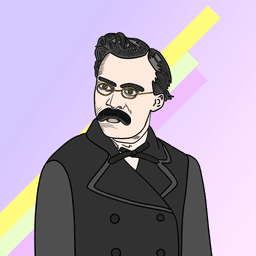German Main Clauses
Learn how German main clauses work. We'll look at word order, verb position, yes/no questions, and coordinating conjunctions. Ready?
In this article, we'll take a closer look at German main clauses.
What exactly is a main clause? A main clause is an independent sentence that can stand alone and conveys a complete thought. The key characteristic of a main clause is that the conjugated verb must always be in the second position.
In main clauses, the conjugated verb must always be in the second position.
Understanding how main clause work in German is essential for building clear, grammatically correct sentences. Let's begin.
Basic Word Order in Main Clauses (SVO)
The standard word order in German main clauses follows this structure: Subject – Verb – Object (SVO)
| 1. Subject | 2. Verb | 3. Object |
|---|---|---|
| Ich | lese | ein Buch |
| Nikki | isst | einen Apfel |
So, for example:
I am reading a book.SVO
Peter buys a newspaper.SVO
This structure is similar to English. However, German allows flexibility by changing word order while keeping the verb in second position.
Variations in Word Order
1. Emphasizing Elements
In German, other sentence elements (such as time, place, or objects) can be moved to the beginning for emphasis. However, note that the verb always stays in second position:
I see the dog.SVO
Today, I see the dog.time first
The dog, I see.object first
So even when the subject is not first, the verb still occupies the second position.
2. Time-Manner-Place (TMP) Rule
German follows a strict order for adverbial phrases:
Time – Manner – Place (TMP)
Example:
I travel tomorrow by train to Berlin.TMP
Correct Order:
| Type | Example |
|---|---|
| Time (Wann?) | morgen (tomorrow) |
| Manner (Wie?) | mit dem Zug (by train) |
| Place (Wo?) | nach Berlin (to Berlin) |
Changing this order sounds unnatural to native speakers.
Yes/No Questions in Main Clauses
Yes/no questions are also main clauses, but they follow a Verb-Subject-Object (VSO) structure:
Are you coming today?yes / no questions
Have you read the book?yes / no questions
The verb moves to the first position, and the subject follows directly after it.
W-Questions in Main Clauses
When a question word (wer, was, wo, warum, etc.) starts the sentence, the verb remains in second position:
Where do you live?
Why are you learning German?
In these cases, the question word takes the first position.
Main Clauses with Modal Verbs
When using modal verbs (können, müssen, wollen, etc.), the conjugated modal verb stays in second position, while the main verb moves to the end:
I can speak German.
We must get up early.
Even when the sentence starts with another element, the modal verb remains in second position:
Today, I must work.
Main Clauses with Separable Verbs
German separable verbs (abfahren, anrufen, aufstehen) split in main clauses. The prefix moves to the end of the sentence:
I call you.
We get up early.
If another element is placed at the beginning, the verb stays in second position:
Tomorrow, I will call you.
Combining Multiple Main Clauses
German main clauses can be combined using coordinating conjunctions:
und (and), oder (or), aber (but), denn (because), sondern (but rather)
These conjunctions do not change word order:
I am tired, but I keep working.
He is reading a book, and she is writing an email.
Each clause maintains its normal structure.
Main Clauses vs. Subordinate Clauses
Main clauses differ from subordinate clauses (Nebensätze) in verb position.
I believe he is coming today.
I believe that he is coming today.
In subordinate clauses, the verb moves to the end of the sentence.
Conclusion
German main clauses follow a verb-second rule, with flexibility in word order. The most important rules are:
- Verb is always in the second position.
- Yes/no questions start with the verb.
- W-questions start with a question word, verb remains second.
- Adverbials follow Time-Manner-Place (TMP).
- Modal and separable verbs have special rules.
- Coordinating conjunctions do not change word order.
Mastering these structures will significantly improve clarity and fluency in German.



